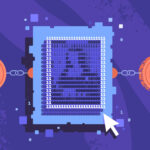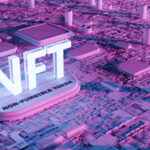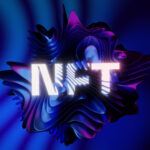Question by Keith, Artist
“As a successful artist, I have sold many limited edition prints of my work. I am curious about the attitude toward low-numbered NFT of an identical nature. Nothing changed, but limited edition NFTs of say 10 or 50, where my original art is preserved in “digital limited edition prints” is this common? Or are NFTs a different animal than prints in that sense the buyers expect each one to be uniquely different? I am confused about this topic. I don’t want to add silly sunglasses, mustaches, or things like that to my neo-expressionist pieces. But is it expected, or can I get away with a series of 25 exact NFT but each numbered from 1-25 or 1-10, depending on their mint order? Thank you so much for your advice. I have searched Youtube, google, and podcasts for clear opinions on this and found it lacking. Your opinion?“
This question is interesting because Keith is asking whether digital art is equivalent to physical art.
Of course, there is no unequivocal answer, and my answer is based solely on evaluation and my knowledge in the field. Everything said is an opinion and is not a recommendation of investment 🙂
So to examine the question, we will start by understanding the value of NFT and where it comes from.
First, the definition of value is the willingness of people to pay.
What makes people willing to pay for digital art?
1- A genuine appreciation for art
2- Belief that the work’s value will increase
Unfortunately, a bubble has developed around the NFT world. People buy NFTs to sell them and earn money, and an authentic appreciation for digital art is rear.
To my opinion in the field, and you can also read it on my post about NFT value, there are 3 value factors that encourage investors to purchase NFT, or instead 3 elements that make investors think that the value of the work will increase:
1- The artist himself (if he is a famous and well-known artist in his field)
2- A large community behind the work (then the members of the community want to hold the token and ready to pay)
3- Added value in the style of a members club or physical products (which creates exclusivity and urgency to purchase)
As long as there is a willingness to pay for an NFT, it will have a market. Today or in a few years.
Such an example for someone who is already selling numbered copies is in an artist named XCOPY –
His identity is unknown, but he has already released very successful collections, and his works are considered very valuable. Furthermore, he posted a tweet saying that the royalties he earned from the resale of his works were much greater than the original mint price. His tweet suggests that the actual profit from an NFT can come even a few years later.
I, for example, do not sell an NFT whose floor Price has fallen below the price of the minting because I have already invested the money.
In the worst case, I will not return the investment. At best, the piece will be worth more in a few years.
As for XCOPY, every new piece of his is sold rapidly, and when he puts out a numbered NFT collection, it gets sold out in minutes because of his reputation.
NFT market today, as I see it, is mostly about investment, and the actual art in NFT world, in my opinion, is not yet evolved.
Another thing worth mentioning in the context of your question is the topic of marketing.
Why are some collections insanely successful? Anonymous artists selling their work and artists who didn’t sell even one NFT even if it’s good?
Proper marketing is an integral part of publishing a collection – building a community, creating interest, managing WL, and discord the right way. There is a hype around NFT but also a bubble. Investors are looking for the SOLD OUT and sale of the piece at a profit.
The bottom line, NFT is a product, and we need to think about how we “convince” customers to believe in it.
Last note to your question, if you are not Banksy or XCOPY and do not SELL OUT in a few hours, I would recommend investing in PR and thinking about the complete shell of the collection. Consider increasing value in the form of physical creation accompanying NFT (e.g., a signed print, which also produces a collector value).
In my opinion, digital art for the sake of art is still unstable in the NFT world. Not until we live in a world of the metaverse will it be possible to display works or hang them on the meta walls easily. But, the world will get there, and older projects will have more time to gain value and grow.
What do you think?
Agree? Disagree?











2 Responses
Hi – I am the one who asked the above question, but it should be noted that I am not asking if NFT’s are equivalent in value to original art but instead, physical prints. In no way, (my opinion) is an NFT even close to being worth the value of a physical, tangible original work of art. Just wanted to clarify that. But it is true that I am wondering that if I can sell a limited edition of 100 signed, identical prints for $1000 each, how would that compare to selling a limited edition of 100 identical NFT’s?, Just reaching out to anyone who has more experience than I. Thanks.
Hey Keith,
thanks for your comment!
In my opinion, Digital art is more similar to music or video than paintings.
As for your question –
I am wondering that if I can sell a limited edition of 100 signed, identical prints for $1000 each, how would that compare to selling a limited edition of 100 identical NFT’s?
As stated in the articles these are two different customers, so it’s difficult to compare,
NFTs are currently more applying for collectors (investors) than art enthusiastic.
More likely to compare it to baseball cards.
Unlike prints or cards, where you can’t trace it after-sale,
you can earn from royalties for reselling of the NFTs based on the smart contract behind it –
at the time of re-selling an NFT, the artist gets royalties as a percentage of the sale.
Home it makes seance 🙂